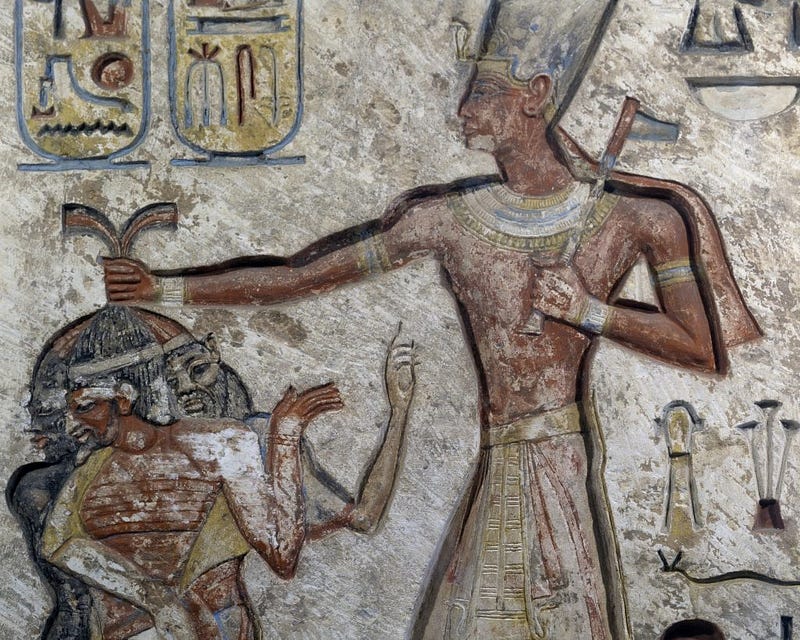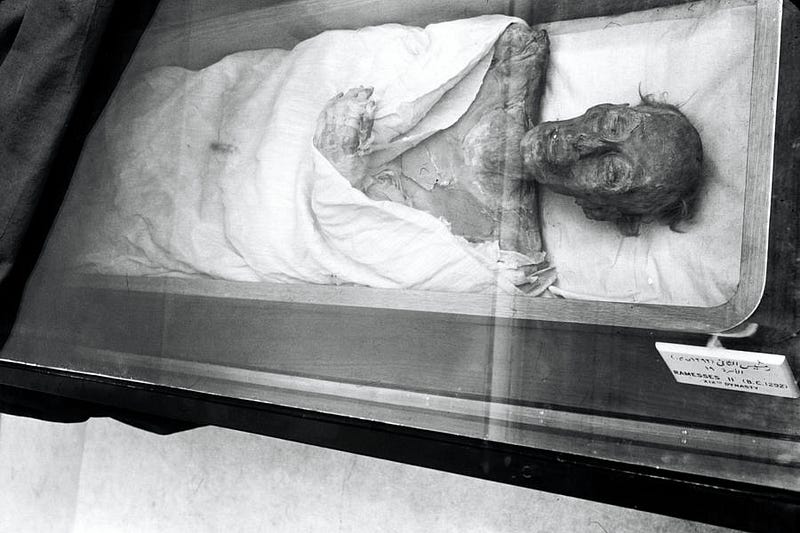The Unbelievable Tale of a Mummy's Journey with a Passport
Written on
Chapter 1: The Legacy of Ramses II
The Pharaohs of Ancient Egypt are iconic figures, having ruled the Nile for more than 3,000 years. Their influence remains evident in modern history, archaeology, and religious practices. Among these remarkable leaders, Ramses II stands out for his numerous achievements during his extensive reign.
One of the most fascinating tales surrounding Ramses II is his unusual return journey from France to Egypt, where his nearly 3,000-year-old mummy required a passport.
Life of the Great Ancestor
Ramses II, often referred to as Ramses the Great, Ozymandias, and The Great Ancestor, was a prominent monarch of the nineteenth dynasty. His reign is marked by a remarkable series of military victories across North Africa and the Levant.

His military campaigns included confrontations with the Syrians, Nubians, and Libyans, alongside peace treaties with the Hittites. Ramses II is also celebrated for his monumental construction endeavors, such as the Abu Simbel temples, the Ramesseum, and the Great Hypostyle Hall. His 66-year reign was characterized by the expansion of the Egyptian Empire and impressive architectural feats.
Pharaohs in Paris
Following his death, Ramses II was interred in the Valley of the Kings, alongside many other nobles of the New Kingdom. His mummy was relocated to a safer location to deter grave robbers and was not rediscovered until 1881.
Fast forward to the 1970s, when Ramses II's mummy required urgent repairs. A report from the New York Times on September 27, 1976, indicated that French scientists had detected a fungal infection threatening the mummy's preservation.
This prompted the need for rapid transport to Paris, where renowned French physician Maurice Bucaille would provide the necessary care.
Why Does a Mummy Need a Passport?
As officials recognized the urgency of transporting Ramses II, they faced an unusual legal stipulation: French law mandates that all individuals, even mummies thousands of years old, possess valid travel documentation.

To comply with this requirement, Egyptian officials created the first-ever passport for a mummy. The amusing details of this document, though never publicly released, indicated Ramses II’s nationality as Egyptian, date of birth as 1303 BCE, and occupation as King (deceased).
A King in Transit
With the necessary travel documents in hand, Ramses II was prepared for his journey to Paris. The New York Times reported that upon arrival, he was greeted by Alice Saunter?Seite, the Secretary of State for Universities, along with a military escort.
Once in France, Ramses II received treatment at the Paris Ethnological Museum, where experts successfully halted the fungal growth. Testing revealed that he had red curly hair during his life and that he had drowned.
Final Thoughts
While this extraordinary series of events is fascinating, it is unlikely that a similar occurrence will happen again. Ramses II will probably remain the first and last pharaoh to ever need a passport.
Until next time, explore the life of another Egyptian Pharaoh.
The first video discusses "Ramses II: The Mummy Who Had To Get A Passport," delving into the remarkable tale of how this ancient king was transported for treatment due to a fungal infection.
The second video, "Why did Pharaoh Ramses II need a passport to travel 3000 years after he died?" explores the legal and historical context behind this unusual requirement.